I'm wondering if I could "scale" a image input to be plotted to a range in the plot. To be more clear, this is what I need:
I have a 400 * 400 image that is generated based on a function which interval is -1..1. So, I do a translate to save this data, like this:
x = Utils.translate(pos_x, 0, self.width, -1, 1)
y = Utils.translate(pos_y, 0, self.height, -1, 1)
data = Utils.map_position_to_function(x, y)
I.e, first I map its position to my range and then I calculate de f(x, y) based on this "new position" and save the data.
The problem is that, later, I have to represent the image contour in the function range. So, I have an image, 400 * 400, that I have to represent in a plot which range is -1..1.
This works pretty well:
import pylab as plt
im = plt.array(Image.open('Mean.png').convert('L'))
plt.figure()
plt.contour(im, origin='image')
plt.axis('equal')
But I couldn't find a way to have the x/y axes in the range -1..1
I tried this:
row = np.linspace(-1,1,0.25)
X,Y = np.meshgrid(row,row)
Z = plt.array(Image.open('Mean.png').convert('L'))
plt.contour(X,Y,Z)
But it doesn't works, and it makes senses to not work, but I don't know how could I do what I want. I have the information about the data in this image, so I also tried to do something like these two approaches:
# 1
plt.figure()
row = np.linspace(-1,1,0.25)
X,Y = np.meshgrid(row,row)
Z = ImageMedia[Utils.translate(X, 400, 400, -1, 1), Utils.translate(Y, 400, 400, -1, 1)]
plt.contour(X,Y,Z)
# 2
im = plt.array(Image.open('Mean.png').convert('L'))
plt.figure()
plt.contour(im, origin='image')
v = [-1, 1, -1, 1]
plt.axis(v)
Which don't work either.
Any help would be much appreciated. Thanks.

